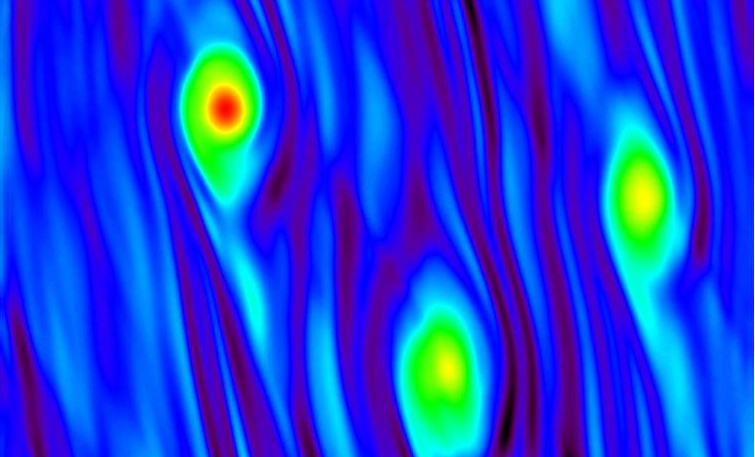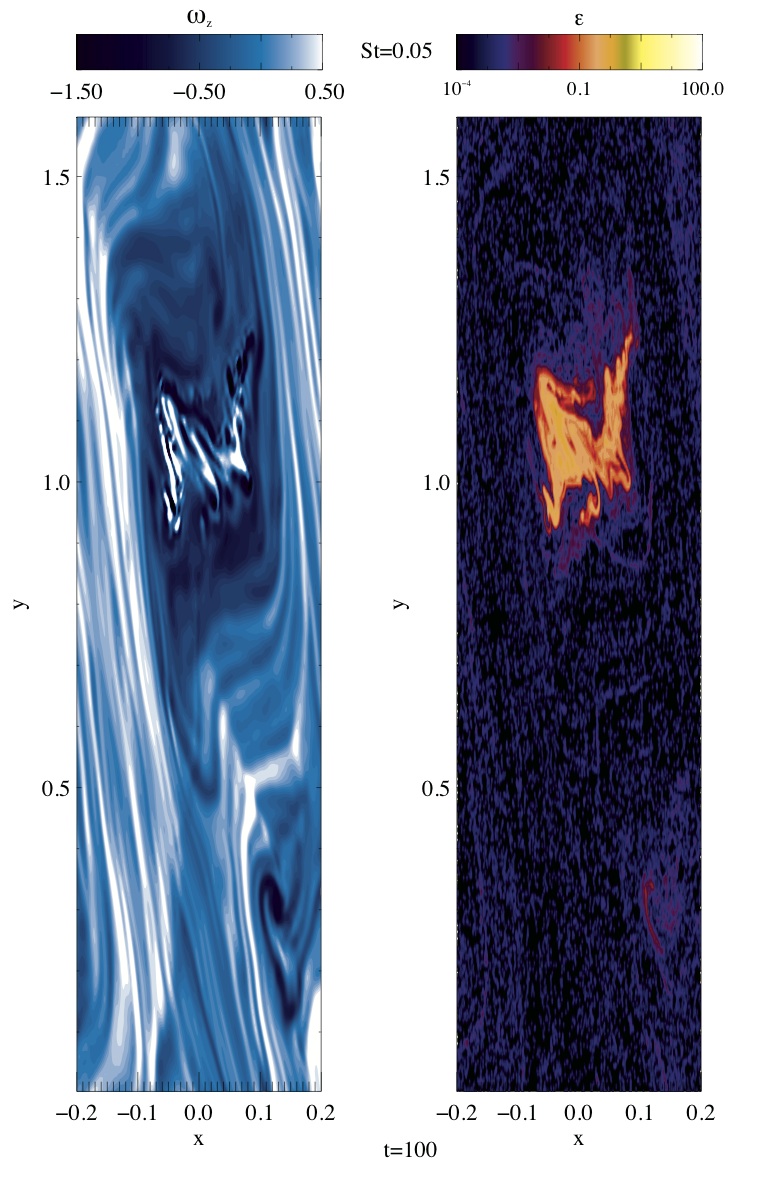Baroclinic Instability
Contact: N. Raettig
Recent years have shown that accretion disks around young stars have extended
regions, which are too low ionized to couple to magnetic fields and thus the nature
of the underlying turbulence cannot be exclusively magnetic. We also found that
disks have in general a baroclinic density and temperature structure which means
that a typical disk is radially buoyant and has a vertical velocity gradient also
known as thermal wind. The radial temperature structure and thus the radial entropy
and pressure stratification are determined by the combined influence of stellar
irradiation, internal viscous heating and internal radiative heat transport via
radiation. If the heat transport in such a baroclinic disk has an effective thermal
relaxation time of 0.1-100 orbits, then a so called Subcritical Baroclinic
Instability (SBI) will amplify small vortices to giant anti-cyclons that will have
strong influence on disk evolution and on planet formation via the efficient
concentration of dust.
Vorticity profile in the midplane of a protoplanetary disk. Anticyclonic vortices are amplified by baroclinic feedback.

Vorticity profile ωz and
local dust to gas ratio ε for St=0.05 particles. The particles accumulate
inside the vortex very efficiently. The local dust do gas ratio is increased above
1. Therefore the streaming instability of particles and their back-reaction onto the
gas (visible as the high vorticity regions inside the vortex) are important. The
streaming instability is as first step towards gravitational collapse and thus
towards planetesimal formation.


